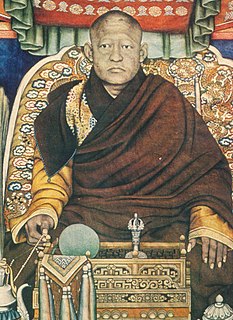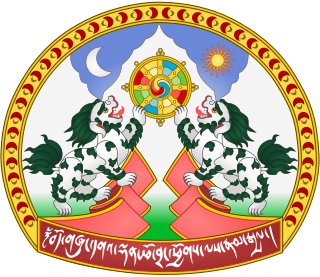Hidden Tibet: History of Independence and Occupation is a book written by Sergius L. Kuzmin, a specialist of amphibians and history of Mongolia and Tibet, Dr.Sc.(Hist.) and Ph.D.(Biol.) of the Russian Academy of Sciences [1] , Dr.Sc.(H.C.) of the Institute of History and Archeology of Mongolian Academy of Sciences [2] and published in 2010 by A. Terentyev publishing house, with the support of the International Campaign for Tibet.

The International Campaign for Tibet (ICT) is a non-profit advocacy group working to promote democratic freedoms for Tibetans, ensure their human rights, and protect Tibetan culture and the environment. Founded in 1988, ICT is the world's largest Tibet-related NGO, with several thousand members and strong bases of support in North America and Europe. On March 15, 2018, the ICT completed 30 years of service to the Tibetan community and received a video message from the Dalai Lama. ICT also released its new logo. An event was also held in the United States Congress on March 6, 2018 to mark the event with Congressional leaders Nancy Pelosi, Ileana Ros-Lehtinen, Jim McGovern, ICT Chairman Richard Gere, Representative Ngodup Tsering and ICT Board Member Tempa Tsering making remarks.
The book is devoted to the political history of Tibet. Its central thesis is that historical facts demonstrate that throughout its history, Tibet has never been an integral part of China.

Tibetan history, as it has been recorded, is particularly focused on the history of Buddhism in Tibet. This is partly due to the pivotal role this religion has played in the development of Tibetan and Mongol cultures and partly because almost all native historians of the country were Buddhist monks.

Tibet is a region covering much of the Tibetan Plateau in Tibet Autonomous Region, China. It is the traditional homeland of the Tibetan people as well as some other ethnic groups such as Monpa, Tamang, Qiang, Sherpa, and Lhoba peoples and is now also inhabited by considerable numbers of Han Chinese and Hui people. Tibet is the highest region on Earth, with an average elevation of 5,000 m (16,000 ft). The highest elevation in Tibet is Mount Everest, Earth's highest mountain, rising 8,848 m (29,029 ft) above sea level.

China, officially the People's Republic of China, is a country in East Asia and the world's most populous country, with a population of around 1.404 billion in 2017. Covering approximately 9,600,000 square kilometers (3,700,000 sq mi), it is the third or fourth largest country by total area. Governed by the Communist Party of China, the state exercises jurisdiction over 22 provinces, five autonomous regions, four direct-controlled municipalities, and the special administrative regions of Hong Kong and Macau.
Presentation of the book was held on March 10, 2010 at the Institute for the regional press. At the presentation of the English edition of the book, which was on held April 10, 2012 in Dharamshala, Tibetan Prime Minister Lobsang Sangay delivered a speech. [3] [4]

Dharamshala is the district headquarters of Kangra district in India. It was formerly known as Bhagsu. The Dalai Lama's residence and the headquarters of the Central Tibetan Administration are in Dharamshala. Dharamshala is 18 km (11 mi) from Kangra. Dharamshala has been selected as one of the hundred Indian cities to be developed as a smart city under PM Narendra Modi's flagship Smart Cities Mission. On 19 January 2017, Chief Minister Virbhadra Singh declared Dharamshala as the second capital of Himachal Pradesh state, making Himachal Pradesh the third state of India with two capitals after Jammu and Kashmir and Maharashtra.

Lobsang Sangay is a Tibetan politician who is the Sikyong (President) of the Tibetan-government-in-exile, officially known as Central Tibetan Administration (CTA) since 2012 and previously served as Kalön Tripa from 2011 to 2012. Following his election, at the request of the 14th Dalai Lama, the Tibetan parliament-in-exile amended the organisation's bylaws to remove the Dalai Lama's executive authority, making Lobsang Sangay its highest leader. In 2012, to reflect this change, Lobsang Sangay's title as chief executive was changed from kalön tripa to sikyong.
In October 14, 2016, Sergey Kuzmin was awarded a diploma of honorary doctor of the Institute of History and Archeology of the Academy of Sciences of Mongolia for his significant contribution to the study of the history of Mongolia and the development of Mongolian studies. [5] In 2017 he received the degree of doctor of historical sciences at the Institute of Oriental Studies, Russian Academy of Sciences. [6] [7]












